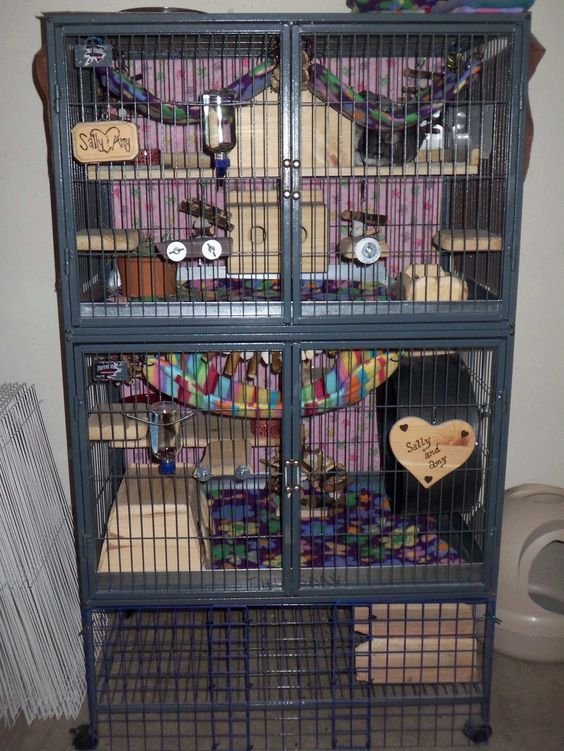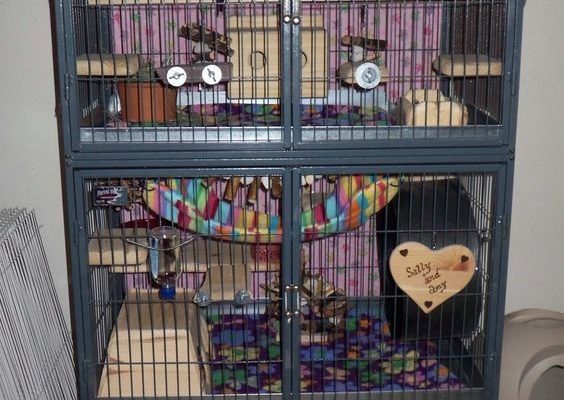
Imagine trying to create a cozy home for your chinchilla, one where they feel safe and loved. It’s a bit like setting up a cafe for a friend who has specific tastes. The right meal, comfy seating, and gentle attention can make all the difference. So, let’s dive into the world of violet chinchilla care, breaking it down into easy-to-follow tips and tricks.
Understanding Violet Chinchillas
Before you roll up your sleeves and get into the nitty-gritty of care, it’s good to know what makes violet chinchillas unique. These little guys have striking fur that’s often a shade of lavender, giving them a distinct look compared to their gray cousins. They require special attention not only because of their pretty coats but also due to their sensitive nature. Just like a delicate flower, they need the right conditions to blossom.
Violet chinchillas are known for their playful and social behavior. They enjoy interacting with their owners and need plenty of enrichment in their environment to keep them happy. Providing them with toys, tunnels, and even safe items to chew on can mimic their natural habitat and help curb boredom. Remember, a bored chinchilla can lead to trouble, much like a bored child!
Creating the Ideal Cage Setup
A suitable cage is fundamental for your violet chinchilla’s well-being. Think of it as their personal sanctuary—a place where they can play, sleep, and feel safe. The cage should be spacious enough for them to jump around. A multi-level cage can be a great choice, allowing them to explore and enjoy different areas.
When setting up the cage, consider these important features:
- Size: Aim for a cage that’s at least 24 inches wide, 24 inches deep, and 36 inches tall. This gives them ample room to hop and play.
- Material: Opt for a metal cage rather than plastic. Chinchillas love to chew, and metal is more durable.
- Bedding: Use safe bedding like aspen shavings or paper-based products. Avoid cedar or pine—those can be harmful.
Don’t forget to include shelves, ramps, and hiding spots. Chinchillas love to climb and explore, so creating a little playground inside their cage keeps them entertained and active.
Violet Chinchilla Diet Essentials
You might be wondering what to feed your violet chinchilla to keep them healthy and happy. Their diet is vital, resembling a balanced meal plan for a human. Here’s what you should focus on:
– Hay: Timothy or orchard grass hay is essential. It helps with their digestion and keeps their teeth healthy. Make sure it’s fresh and free from mold. Chinchillas should have access to unlimited hay throughout the day.
– Pellets: Choose high-quality pellets specifically designed for chinchillas. Look for ones that are high in fiber and low in protein; too much protein can lead to health issues. Generally, a tablespoon or two daily should suffice.
– Fresh Vegetables: While chinchillas can be picky, small amounts of fresh veggies like kale, carrot tops, or bell peppers can be offered as treats. Just introduce new foods slowly to avoid tummy troubles.
And don’t forget to provide fresh water daily! A water bottle is usually the best choice since it keeps the water clean and reduces spills in the cage.
The Importance of Grooming
Grooming your violet chinchilla goes beyond just keeping them looking cute. It’s a crucial part of their overall care. These little fluffballs have dense fur that doesn’t shed like dogs or cats, so it can trap dirt and oils over time. Here’s how to keep their coats healthy:
– Dust Baths: Chinchillas need regular dust baths to keep their fur clean and fluffy. Use volcanic pumice dust; it’s the best option. Provide a small dust bath container for them to roll in for about 15–20 minutes, a few times a week.
– Brushing: Light brushing with a soft brush can help remove loose fur and prevent matting. Just be gentle—chinchillas can be sensitive to rough handling. Make it a bonding activity, allowing them to enjoy the attention while you pamper them.
– Check for Problems: Regular grooming also gives you a chance to check for any skin issues, parasites, or abnormalities. If you notice anything unusual, consult a vet who’s knowledgeable about chinchillas.
Socialization and Interaction
While diet and grooming are crucial, don’t underestimate the importance of social interaction for your violet chinchilla. These pets thrive on companionship. They are social animals, and spending time with you can make a big difference in their mood and behavior.
Try to engage with your chinchilla daily. Here are some ways to bond:
– Playtime: Set aside time for them to explore outside of their cage in a safe area. Supervised playtime can help them burn off energy and stimulate their minds.
– Toys: Provide a variety of toys—like wooden blocks, chew toys, and tunnels. Regularly rotate their toys to keep things interesting and engaging.
– Gentle Handling: When holding your chinchilla, be calm and gentle. Cradle them in your hands, but be attentive to their body language. If they seem uncomfortable, let them go back to exploring.
Common Health Concerns
Like any pet, violet chinchillas can face health issues. It’s essential to be aware of the signs so you can act quickly. Here are a few things to watch out for:
– Dental Issues: Chinchillas have continuously growing teeth, so they need plenty of hay to wear them down. Watch for signs of overgrowth, like difficulty eating or drooling.
– Digestive Problems: Look for changes in their droppings. Diarrhea or straining can indicate health issues, so it’s wise to consult a vet if you notice anything off.
– Respiratory Issues: Be mindful of your chinchilla’s breathing. Wheezing, coughing, or nasal discharge can signal respiratory problems. A vet’s visit can help determine the next steps.
Creating a Comfortable Living Space
Lastly, think about how to create a welcoming environment for your violet chinchilla. This not only includes the cage setup but also the area around it. Keep the following tips in mind:
– Temperature Control: Chinchillas are sensitive to heat. Make sure their living space stays cool, ideally between 60-70°F (15-21°C). Avoid direct sunlight and any areas that might get too warm.
– Noise Levels: These creatures can be skittish, so a quiet area away from loud noises is best. They’ll feel more secure when they aren’t constantly startled.
– Safe Spaces: Provide plenty of hiding spots in their cage, like small houses or tunnels, where they can retreat when feeling shy or stressed.
In essence, caring for a violet chinchilla is an enriching experience that involves diet, environment, and grooming. You’re not just a pet owner; you’re a pal who provides a safe haven for these unique creatures. With the right knowledge and some dedication, you can ensure your chinchilla thrives and brings joy into your life. Enjoy the journey of chinchilla parenting—it’s a rewarding adventure!

